4 Reasons Why Your Brake Pedal Goes to the Floor (and How to Fix It)
Few vehicle issues are as frightening as a brake pedal with no pressure that sinks to the floor. This is not only a terrifying thought but an outright hazard as well.
Read on to learn about the most common, specific causes of a brake pedal that goes to the floor with almost no resistance and how to fix it. We’ll also tell you exactly what you should do if this happens to you while driving.
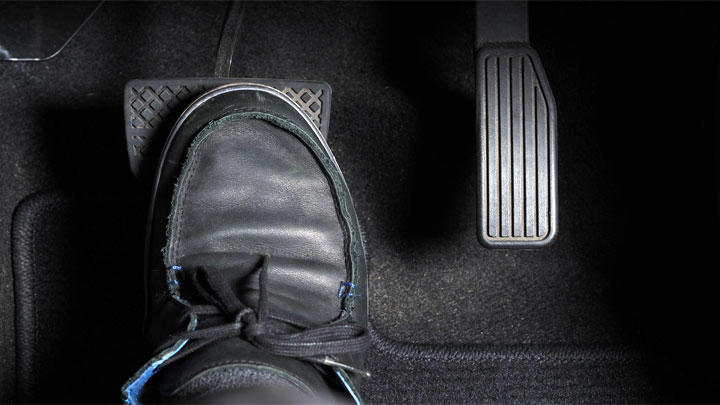
Causes of a Brake Pedal That Goes to the Floor
A vehicle’s brake pedal can go to the floor for a number of reasons, each being just as concerning as the last. Understanding each of these potential causes makes it possible to diagnose the issue at hand, and get back on the road in a timely sense.
The following are several of the most common reasons that your vehicle’s brake pedal goes to the floor.
#1 Improper Brake Bleeding
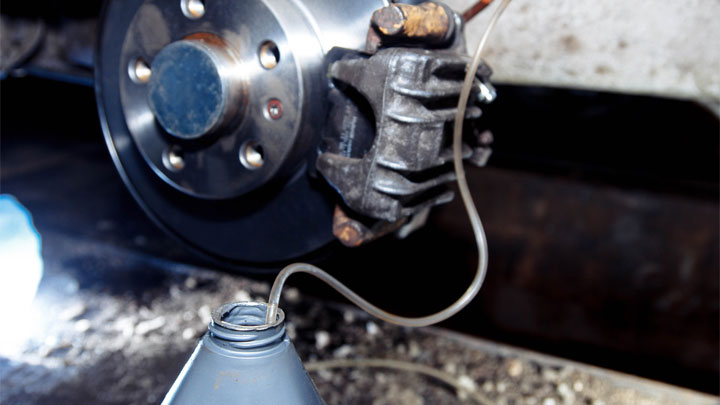
One of the most common causes of spongy brakes, or a brake pedal that goes to the floor, is a lack of proper bleeding following prior brake system repair. Along with the sponginess, you may hear whooshing or hissing.
Anytime that the hydraulic circuit of a vehicle’s brake system is opened, all air must be purged. This stems from the fact that air is compressible, while fluid is not. After properly bleeding the brakes, the brake system function should be restored.
#2 – Significant Fluid Loss
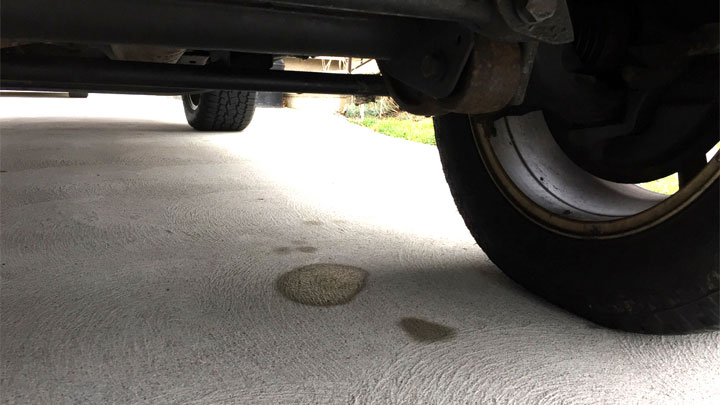
A significant loss of brake fluid can also cause a vehicle’s brake pedal to fall to the floor. This is due to the fact that no hydraulic force is unable to act upon a vehicle’s brake calipers or wheel cylinders, due to rapid fluid loss.
In time, enough fluid will be lost that brake function as a whole is compromised. In most cases, issues of this type will be accompanied by a brake warning light on a vehicle’s dash.
#3 – Faulty Master Cylinder
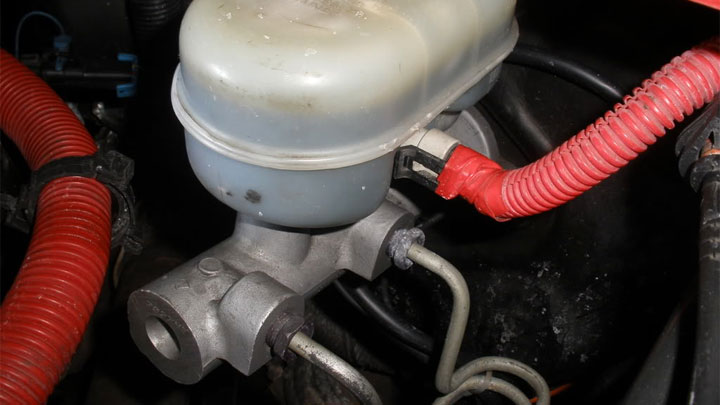
A brake system’s master cylinder can fail, bypassing internally, which will also cause a vehicle’s brake pedal to fall straight to the floor in most cases.
When this occurs, a vehicle’s brake system never produces the pressure for which it is designed, in turn, preventing the system’s calipers and/or wheel cylinders from actuating. Likewise, faulty remanufactured master cylinders are also known to cause similar issues.
#4 – Brake Booster Issues
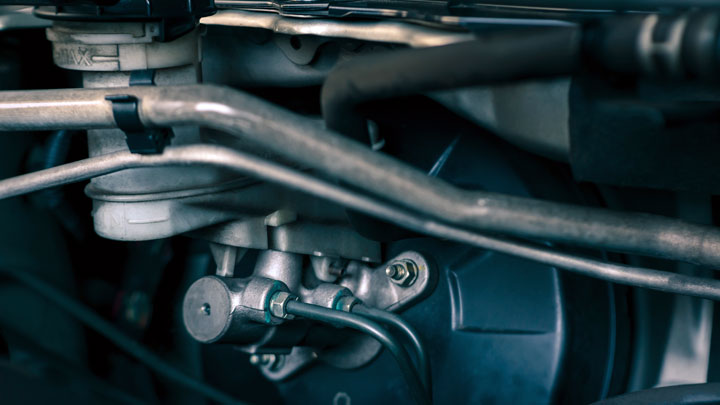
If you notice that your vehicle’s brake pedal feels odd, but only when the engine is running, there is a chance that your vehicle’s brake booster is to blame.
When operating as intended, a vehicle’s brake booster supplies the necessary assistance to provide effortless brake application. However, issues with this component can pose a number of oddities within the brake system itself.
How Car Brakes Work
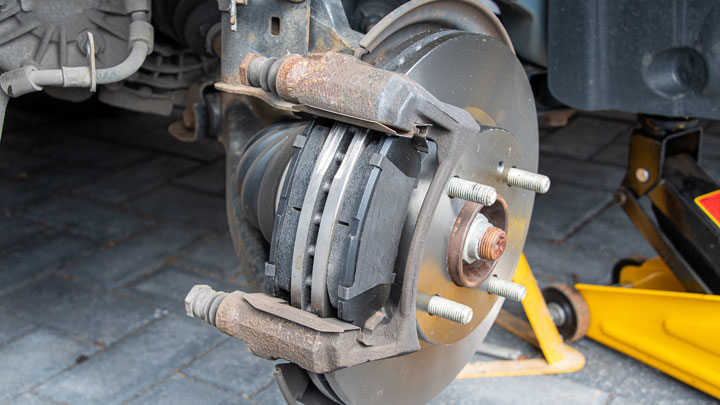
Before learning to recognize the root cause of brake system failure, one must first understand the basic principles of automotive brake function as a whole. These principles are outlined below, in their most basic forms.
- Mechanical Input: The process of brake application begins when a vehicle’s driver depresses the brake pedal, thereby manipulating an attached pushrod. This, in turn, creates mechanical force, which is transferred to the pushrod itself.
- Force Multiplication: This pushrod acts upon a vehicle’s vacuum-assisted brake booster, which multiplies the initial mechanical force imputed by a vehicle’s driver.
- Mechanical-to-Hydraulic Transfer: The mechanical force produced in steps #1 and #2 is transferred to hydraulic force, as further pushrod movement acts upon the internal plunger within a vehicle’s master cylinder. Hydraulic fluid (brake fluid) is then forced out of the vehicle’s master cylinder through a series of brake lines.
- Wheel-End Application: The force transmitted through this hydraulic fluid travels to each wheel-end, exerting a force of a similar degree upon a vehicle’s brake calipers/wheel cylinders.
- Hardware Actuation: The force imparted upon a vehicle’s brake calipers/wheel cylinders is transferred to the brake pads and shoes at each corresponding wheel end. This causes a vehicle’s brake pads to clamp down on their respective rotors. Likewise, a vehicle’s brake shoes are forced outward, thereby coming into contact with their corresponding brake drums. Each of these actions produces the friction necessary to bring a vehicle to a halt.
How to Diagnose and Fix It
The following steps can be used to diagnose and repair the root cause of a vehicle’s malfunctioning brake system. As always, consult factory-specific service literature for your particular vehicle, before attempting any such repairs.
#1 – Check Brake Fluid Level
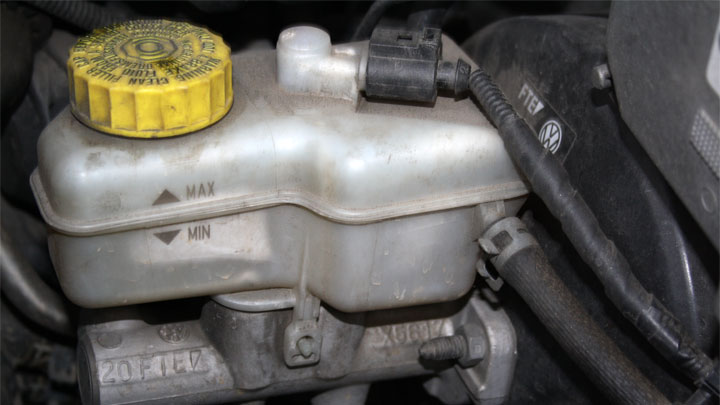
Begin by inspecting your vehicle’s brake fluid level. If it is significantly low, top the reservoir’s fluid level off until the “full” mark is reached.
Be sure to use the correct type of brake fluid which will be specified in the owner’s manual. This will usually be DOT 3 or 4 but some vehicles may be compatible with DOT 5 brake fluid.
#2 – Inspect For Leaks
If your vehicle’s brake fluid level was low, a thorough inspection for system leaks will be necessary. Usually, leaks of this type are not overly difficult to locate.
Trace each brake line by hand, paying close attention to the vehicle’s brake calipers, wheel cylinders, and master cylinder. The appearance of fluid on the inside of a vehicle’s rear tires usually indicates a substantial wheel cylinder leak. Any leaks should be repaired before proceeding.
#3 – Bleed System
You will now bleed your vehicle’s brake system to purge any remaining air. It is advisable to bleed all 4 wheel end brake assemblies, beginning at the rear, then working forward to the front brakes.
If an externally leaking master cylinder was located, the master cylinder itself must also be bled, before bleeding each wheel end.
#4 – Unhook Brake Booster Vacuum Supply
If your vehicle’s issues still persist, unhook the vacuum supply line to your vehicle’s brake booster. If the issue resolves itself, brake booster replacement will be necessitated.
#5 – Replace Master Cylinder
If none of the above-mentioned steps have relieved your vehicle’s issues, a faulty master cylinder is almost certainly to blame. If in doubt, replace the vehicle’s master cylinder, before bleeding the entire system as a whole.
What To Do If Your Brake Pedal Goes to the Floor While Driving

Above all else, it is extremely important to avoid panicking, if your vehicle’s brake pedal goes all the way to the floor when driving. While this might seem easier said than done, one must consider the fact that they will be incapable of acting sensibly, if they are to lose their cool.
First, you should quickly evaluate your options, studying traffic conditions in front of, behind, and to each side of your vehicle. Determine if it is safe to merge onto the shoulder of the road, and how quickly you must do so to avoid risking an accident.
Continue to slow down by keeping your foot off of the accelerator pedal, while maintaining your lane of travel. If possible, allow your vehicle to slow to a speed of 30 MPH, before attempting to exit to the shoulder of the road. When it is safe to do so, signal your intent, and slowly exit the roadway.
Once on the shoulder of the road, your vehicle should continue slowing. Once your vehicle has slowed to 20 MPH or less, you can apply the emergency brake, which is controlled mechanically, rather than via hydraulic pressure. Bring your vehicle to a safe stop, while leaving your emergency brake set thereafter.
In any event, you should never attempt to continue driving, in the absence of properly working brakes. Doing so is extremely risky, and presents the very real possibility of injury to yourself or others. Instead, a tow truck should be called, and the vehicle in question should be taken to a shop for proper repair.
- P0480 Code (Symptoms, Causes, and How to Fix) - Apr 19, 2024
- Car Temperature Gauge Stopped Working? (Here’s Why) - Apr 15, 2024
- Ignition Coil vs Coil Pack (What’s the Difference?) - Apr 8, 2024
